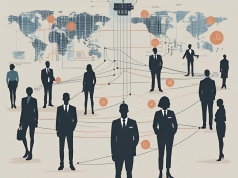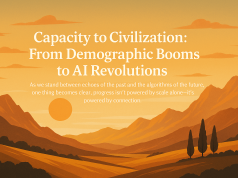At the heart of the environmental movement lies a promise of a cleaner, more sustainable future, but this transformation has ripple effects that extend beyond the obvious ecological benefits. One of the most significant, yet often overlooked, consequences is the impact on the workforce – especially within the government sector. As the stewards of public policy and regulation, government employees are at the forefront of these changes. This seismic shift in environmental policy is effectively reshaping the job market, altering not just the types of jobs available, but also the skill sets required to fulfill them.
The greening of government work is a tale of two narratives: one of job creation, the other of job displacement. Investments in renewable energy, energy efficiency, and other green initiatives are projected to create new employment opportunities. However, as these policies take effect, there is a simultaneous displacement of jobs in sectors that are deemed unsustainable or harmful to the environment. Workers in traditional energy sectors, such as coal, oil, and gas, face an uncertain future. The dissonance between these two narratives is a pressing issue for policymakers and the government workforce alike.
Current government workers may find their roles evolving or becoming obsolete. This necessitates a reevaluation of skill sets and a concerted effort towards retraining and education. Skills in sustainability, environmental compliance, and green technology are becoming more valuable, and the government must pivot to support this transition. By offering training programs and educational resources, government agencies can prepare their employees for the challenges of tomorrow.
The broader implications for federal employment strategies are profound. Policymakers must balance the need for progress with the livelihoods of their workforce. This balancing act requires an inclusive approach that considers the socioeconomic factors at play. For example, transitioning to a green economy may be more challenging for rural areas that have historically depended on industries now considered harmful to the environment.
As we delve deeper into this issue, it is important to include the voices of those directly affected. Interviews with policy experts provide a high-level understanding of the envisioned trajectory of government workplaces. Union representatives give insight into the concerns and demands of the workforce, ensuring that their rights and needs are not sidelined in the pursuit of environmental goals. Furthermore, stories from workers themselves shed light on the personal impact of these policy shifts.
Ultimately, the question remains: How can the government best prepare its workforce for the green transition? A multi-pronged approach is necessary, one that emphasizes education, retraining, and a safety net for those displaced. Environmental policy decisions made today will undeniably mold the government labor force of tomorrow. It is imperative that these decisions not only champion the cause of sustainability but also advocate for the welfare of the workforce that will bring these policies to life.
The journey towards a greener future is complex and multifaceted. By understanding and planning for the impacts on the government workforce, we can strive to ensure a future that is not only sustainable for the planet but also just for the people who serve it.




























